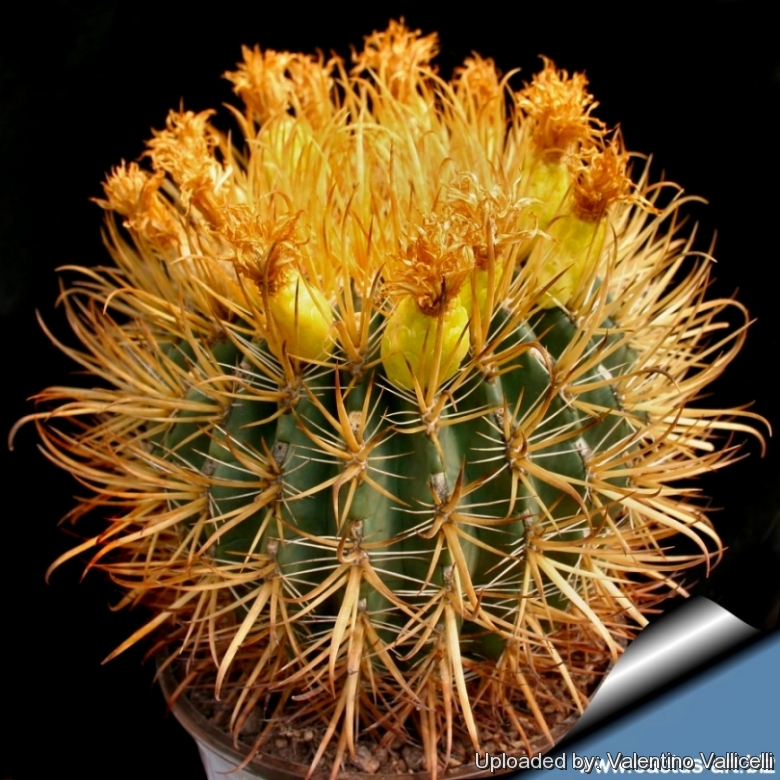
Ferocactus chrysacanthus Photo by: Valentino Vallicelli
This is a somewhat slow-growing species. The plant pictured above is about 18 years old and about 22cm in diameter, although it has been flowering for several years. Because of its beautiful golden spines and its small stature, F. chrysacanthus makes a great collector's plant.
Origin and Habitat: Mexico (Baja California: Only occurs naturally on the island of Cedros, off the west coast of northern Baja California and possibly on a neighboring island, West San Benitos, with some reports of it on the adjacent peninsula.)
Habitat: with a balanced and relatively high average temperature, low rainfall but relatively high humidity and specific soil composition (these conditions are difficult to imitate in cultivation, and make this species relatively problematic to grow.
Synonyms:
See all synonyms of Ferocactus chrysacanthus
Common Names include:
ENGLISH: Red-spined Barrel Cactus, Yellow-spined Barrel Cactus, Golden spined barrel cactus
LITHUANIAN (Lietuvių): Auksuotasis ferokaktusas
RUSSIAN (Русский): Ферокактус золотистоколючковый
Description: Ferocactus chrysacanthusSN|12323]]SN|12323]] is a small sized solitary or rarely cespitose barrel cactus with up to 6 heads. The plant is very densely spined (one of the spiniest of the Ferocacti) and because of that, will tolerate full sun.
Stem: Usually simple, globose to cylindrical, dull greyish green.
up to 30(-40) cm in diameter, 90(-100) cm tall.
Ribs: 13 to 22 , tubercled.
Central spines: 4 to 10 all thick up to 10,5 cm long, twisted and more or less hooked golden yellow (it sometimes occurs with red spines)
Radial spines: 4 to 12 ( or more) up to 5 cm long, slender and white.
Flowers: Near the center of the plant, typically yellow or brownish yellow, but also orange, 2,5 cm long, 4,5-5 cm in diameter when fully open. The inside petals are yellow or orange, the outside ones are brownish. Scale naked on the axil, closed set and imbricated, the lower one rounded ang green, the upper ones more oval brownish, the margin some time ragged. Outer perianth-segments stiff. Pinkish-brown, inner perianth-segments 2 cm long, yellow with reddish-mid-stripesand toothed margin.
Blooming season: Summer.
Fruits: Yellow 3 cm long.
Seeds: Up to 2,5 mm wide, net-patterned and black.
Subspecies, varieties, forms and cultivars of plants belonging to the Ferocactus chrysacanthus group
Bibliography: Najor references and further lectures
1) James Cullen, Sabina G. Knees, H. Suzanne Cubey “The European Garden Flora Flowering Plants: A Manual for the Identification of Plants Cultivated in Europe, Both Out-of-Doors and Under Glass” Cambridge University Press, 11/Aug/2011
2) Curt Backeberg “Die Cactaceae: Handbuch der Kakteenkunde” Vol. 4 G. Fischer, 1960
3) David Hunt, Nigel Taylor “The New Cactus Lexicon” DH Books, 2006
4) Nathaniel Lord Britton, Joseph Nelson Rose “Cactaceae: Descriptions and Illustrations of Plants of the Cactus Family” Courier Dover Publications, 1963
5) John Borg “Cacti: a gardener's handbook for their identification and cultivation” Blandford P., 1970
6) Carnegie Institution of Washington Publication, Vol. 248, 3 Carnegie Institution of Washington, 1922
7) Forrest Shreve, Ira Loren Wiggins “Vegetation and flora of the Sonoran Desert" Vol. 2” Stanford University Press, 1964.
8) Hiroshi Hirao "Colour encyclopaedia of cacti"Seibundo Shinkosha, 1979
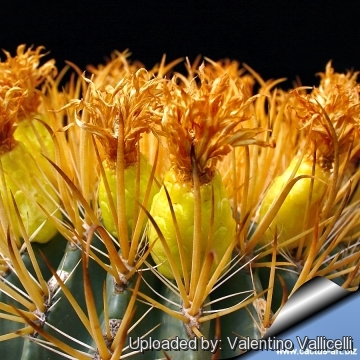 Ferocactus chrysacanthus Photo by: Valentino Vallicelli
Ferocactus chrysacanthus Photo by: Valentino Vallicelli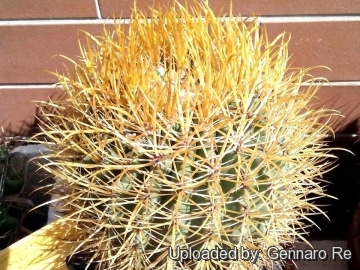 Ferocactus chrysacanthus Photo by: Gennaro Re
Ferocactus chrysacanthus Photo by: Gennaro Re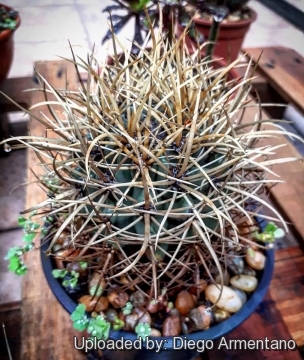 Ferocactus chrysacanthus Photo by: Diego Armentano
Ferocactus chrysacanthus Photo by: Diego Armentano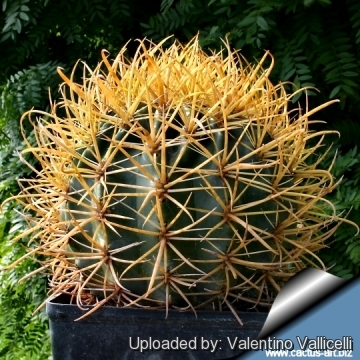 Ferocactus chrysacanthus Photo by: Valentino Vallicelli
Ferocactus chrysacanthus Photo by: Valentino Vallicelli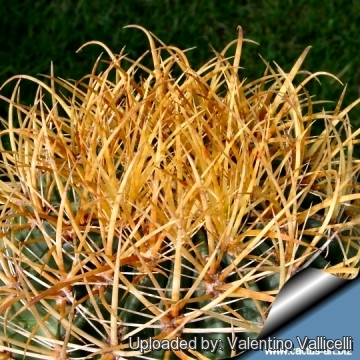 Ferocactus chrysacanthus Photo by: Valentino Vallicelli
Ferocactus chrysacanthus Photo by: Valentino Vallicelli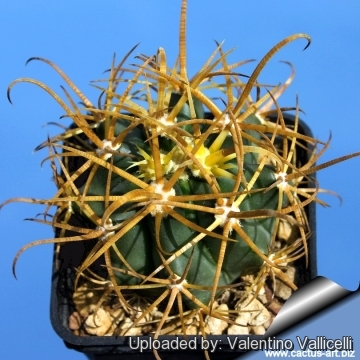 Ferocactus chrysacanthus Photo by: Valentino Vallicelli
Ferocactus chrysacanthus Photo by: Valentino Vallicelli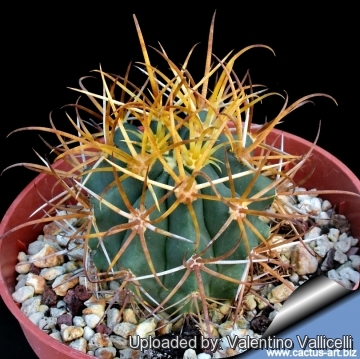 Ferocactus chrysacanthus Photo by: Valentino Vallicelli
Ferocactus chrysacanthus Photo by: Valentino Vallicelli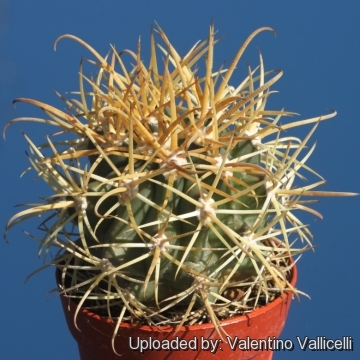 Ferocactus chrysacanthus Photo by: Valentino Vallicelli
Ferocactus chrysacanthus Photo by: Valentino VallicelliCultivation and Propagation: Use very draining soil, water during the aestival growth cycle (this plant need plenty of water) But it's necessary to avoid wetting the bodies of these plants while they are in sunlight. A wet cactus in the sun light can cause sun burning which can lead to scars or even fungal infections and death. Needs full sun. Keep dry at 10°C in winter, but it can tolerate sporadic light frost.
Propagation: Seeds are the only way of reproducing. The seeds germinate readily.
Remarks: It is often recommended to graft young seedlings on Eriocereus jusbertiiSN|8197]]SN|8197]]. But plants can grow on their own roots for ages if watered carefully.
Your Photos
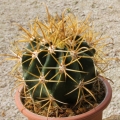
by Valentino Vallicelli
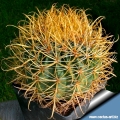
by Valentino Vallicelli




















